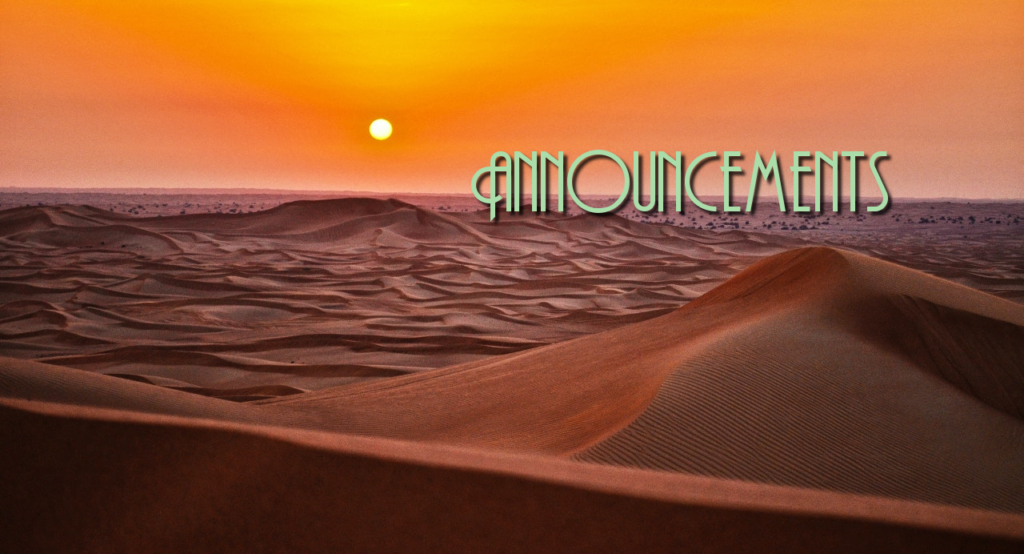Read More – Our Latest Contenders Posts:
- The Contenders 25: March Retrospective/May Forecast

- Contenders 25: April Opening

- Contenders 24: Final Analysis

2025 UPDATE TO THE BELOW PENDING.
For years, prognosticators have used their knowledge of film history, Oscar history, and other tools to determine whether a film is going to be a major Oscar threat, a minor competitor, or have no impact at all. While I’m not a statistician, I’ve always looked more empirically at precursors and other factors when making assessments. What the Contender series is intended to do is quantify as much of that as possible. While numbers may need to be tweaked over time, this first year will be a fascinating exploration of the system, putting it to use and seeing how things shake out.
Eligibility Criteria
What does it take to qualify for this list? There are five criteria that determine a film’s eligibility for consideration in this series.
- $100 Million+ Box Office and one of either 80+ MetaCritic or 75%+ Rotten Tomatoes (critics scores)
- Festival Award (see below)
- Our Prediction Citation
- General Buzz
Here are the festivals and associated awards that are used to determine the above:
- Berlin International Film Festival: Golden Bear, Silver Bear for Best Director, Silver Bear for Best Leading Performance, Silver Bear for Best Supporting Performance, and Silver Bear for Best Screenplay.
- Cannes Film Festival: Palme d’Or, Grand Prix, Best Director (Prix de la mise en scène), Best Actor (Prix d’interprétation masculine), Best Actress (Prix d’interprétation féminine), Best Screenplay (Prix du scénario), and Caméra d’Or.
- Sundance Film Festival: Grand Jury Prize, Audience Award, and Directing Award
- Toronto International Film Festival: People’s Choice Award
- Venice International Film Festival: Golden Lion, Grand Jury Prize, Silver Lion, Special Jury Prize, Volpi Cup, and Best Screenplay.
That General Buzz category is a catch-all to try to collect films that might not otherwise be considered. It’s also useful for including films that add some pep and diversity to the rolls.
Before getting into the details of the categories and how they are calculated, let’s look at the reasons these four are included.
The box office criteria is the weakest, having diminished over the last few decades. Today, a film like Driving Miss Daisy can’t cross $100 million, but back in 1989 it certainly did, though it did so bolstered by its Oscar nominations. This breakpoint is intended to get the big summer blockbusters that will contend in craft categories into the list but is balanced by the critical response as films that break the milestone without critical support are no longer as capable of contending as they used to be.
Festival awards have varying impact. If a film plays a festival and wins an award, it’s the kind of movie many will consider supporting. If it doesn’t win anything, it might not have much to go on, so we use a victory as a sign of that support.
Finally, our predictions. Pete, Thomas, and I have plenty of experience in making forecasts and while we aren’t perfect, if it makes our list, it has some measure of buzz to it and so it’s an instant-inclusion.
Contender Types
Now, let’s dig into the numbers we’re using and how the information will be laid out on each contender’s page. The overarching Contender Factor is highlighted at the top of the page with individual categories listing information below that. It is broken into five areas as outlined and explained below. Additionally, the weight each area is given is specified as a portion of the Contender Factor at the top.
The Contender Factor base value changes depending on what stage the contender is in. A film that has not yet released will be in either Stage 1 (Pedigree) or Stage 2 (Content). A film that’s released but has not closed at the box office will be in Stage 3 or Stage 4. The Contender Factor section will state the current tally and what stage the film is in.
For 2025, we’ve broken down the contenders into four categories as outlined below. Each category has individual factors for each of the different stages since a craft film is going to rely more heavily on box office and content than a broad contender while a narrow contender will favor critics perception over audience perception.
Wide: These films are contending in nearly every Oscar category at once. They are technical marvels with exceptional above-the-line representation. 2024’s The Brutalist and Wicked would go here.
Limited: When you have a strong film but it’s not a period or sci-fi spectacle with a lot of craft-heavy elements, this is the category you would fit into. While they will compete in categories like Casting, Film Editing, Original Score, Cinematography, and Sound, the rest of the craft categories are unlikely. Anora and I’m Still Here are examples of these.
Craft: These are films that are technically marvelous but aren’t always well liked by critics or audiences, yet their design styles are strong enough to earn them Oscar nominations. Nosferatu and Better Man are examples of these.
Animation: This one is self-explanatory. Animated films fit into this category. While they often have a chance in the Original Score, Original Song, Sound, and rarely Best Picture and screenwriting categories, they would still fall into this category regardless. The Wild Robot and Flow are examples for this.
Stages
Below you will see a sample layout of the contender page with descriptions of each factor that contributes to the final result.
Contender Factor: 0 to 100 (Stage 5 of 5 complete)
Stage 1 – Pedigree
Director: the film’s director
Writers: the film’s writer(s)
Stars: the film’s stars
Techs: the editor, cinematographer, and composer
Distributor: this is either the studio that bought and distributed the film or, in the case of animated features, the studio that produced it.
Prior Recognition: This is broken into three segments and is the basis for the rating. These are based on how many Oscar nominations (and wins) a member of any of the above individual elements (4+ versus 3 or fewer) and how recent that recognition was. In parentheses you’ll see the following numbers (# of Nominations:# of Wins, first-last date of nomination).
Rating: (10%-15% of Factor)
Stage 2 – Content
Genre: This is whether it’s a comedy, drama, horror, science fiction, etc. Genre really does matter. Although the Academy has been spreading the wealth more in the last few decades, it still loves its straight dramas. Dramas and biopics typically get the highest ratings while horror often gets the lowest.
Length: Incredibly short films tend not to have much Oscar chance and overly long films can tank their chances, especially when they aren’t technically epics. Anything between 90 minutes and 2.5 hours have better shots at nominations than those outside those ranges, so they aren’t nearly as much of a factor as what’s between.
MPAA Rating: While there are few ratings, PG-13 and R are the most important with the latter getting higher weight. PG is seldom-seen as an Oscar nominee and G-rated can generally only figure in Best Animated Feature. Since the invention of the NC-17 rating, no film with that rating has ever been Oscar nominated. As for unrated? Those are usually non-English-language films and will struggle if they don’t get a standard release that requires such a rating.
Rating: (10%-20% of Factor)
Stage 3 – Release
Festival: Did the film make its premiere at an accepted film festival. The only festivals we will calculate into the score are: Berlin, Cannes, Sundance, Telluride, Toronto, and Venice. All others are calculated as “Minor” festivals.
Release Date: The month a film releases is quite important as studios don’t typically release the films they think will be Oscar no-shows early in the year. January, February, and August are typically the worst month for Oscar-contending releases with March, April, and September being close behind. The best months are November and December.
Rating: (5%-15% of Factor)
Stage 4 – Critics
MetaCritic Score: This site gives ratings on a scale of 0 to 100. That number is divided by ten to get its half of the rating.
Rotten Tomatoes Score: While this one is also a scale of 0 to 100, they are percentages rather than whole numbers. That’s not really important and the percentage is removed before reducing the same way as the prior.
Rating: (50% of Factor)
Stage 5 – Audience
Rotten Tomatoes Audience Score: Of the three ratings used to determine audience enjoyment of a film, this is probably the middle ground for them. Rotten Tomatoes is the choice over MetaCritic because MC has too few readers participating in polling, so their votes are more skewed and often high-brow. This is a percentage and is treated like the RT critics score.
CinemaScore: This organization doesn’t gauge interest in every movie. They only poll for wide releases and ask opening weekend audiences for their impressions of the film. Since those that see a film in that starting frame are the most excited, their voting tends to reflect whether word of mouth can build for the film or if it will quickly disappear. These are rated on a letter-grade scale with “A+” equaling ten, “A” being nine, and so on. Will not count for/against films that do not receive a score.
IMDb Rating: The most broadly used viewer analysis comes from IMDb whose 0-10 scale doesn’t need to be adjusted for adding into the final audience tally. It, along with Rotten Tomatoes, tend to be gamed by people who want to tank a rating for little reason other than spite.
Box Office Tally: While the above three factors reflect opinion, box office numbers can dictate general popularity. While this is true of films that release to wide audiences, it’s equally important to limited releases. Generally, wide releases aim for $100 million at a minimum while indie films hope for $1 million or more. There are separate factors determined based on whether the film only ever released in few theaters or reached thousands. Will not count for or against if no theatrical release.
Box Office Status: This will tell you if the box office number provided above is a final tally or if the film is still earning money. While we won’t be updating this information frequently, you’ll know it’s not going to be updated anymore when the status says “closed.”
Rating: (15% of Factor)












